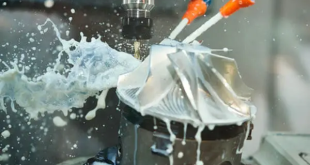The Government of Australia typically allows you to install a turbocharger or supercharger on your vehicle if it’s similar to the one manufactured by the original manufacturer for the particular automobile. Turbo in Australia is very common and is considered safe by users in general. Basically, a turbocharger sucks in air, compresses it, and then delivers the compressed air into your engine’s manifold, increasing horsepower. A downward stroke of the piston forces this dense, pressured air into the combustion chamber. You may burn more gasoline because your engine gets more oxygen and burns it more quickly. And the more gasoline you use, the more power you generate.
In practice, you’re allowed to install a turbocharger or supercharger on your automobile in NSW, Victoria, and South Australia if it’s similar to the one made by the manufacturer for that specific car – that is, assuming that model of car had that option in the first place.
Single turbochargers, for example, are those turbos that are referred to as those turbos that are most commonly thought to exist with varying sizes of the elements contained within it and which can achieve completely different results in terms of torque and its characteristics. It is because single turbochargers are the most common type of turbocharger. Smaller turbochargers may spool up more quickly and often provide greater levels of low-end torque as well as top-end power. On the other hand, larger turbochargers are sure to produce higher levels of top-end power.
Advantages
- The arrangement of a turbo engine contributes to the supply of exhaust gas energy to the turbo in a highly efficient manner, which, in turn, contributes to the delivery of very dense and clean air into the cylinders. If a greater quantity of energy is fed into the exhaust turbine, then the amount of power produced will also be increased. It has been identified that there is a cost penalty associated with addressing the complexity of a system that needs elaborate turbine housings, exhaust manifolds, and turbos. This is the case with the sort of turbo being discussed here.
- Running a turbo doesn’t cost you anything since most of its power comes from exhaust gas that would otherwise be thrown away. It also implies that you may get greater leverage out of a smaller engine without the requirement for an engine upgrade. Turbocharging a tiny machine is a perfect compromise since larger, more powerful engines take up more room and cost more.
- Turbochargers also raise the pressure within your engine. ‘Pre-ignition’ occurs when the raw gasoline ignites before the spark plugs can ignite it in an engine under high pressure. A turbocharged car’s engine pressures will rise if accelerated forcefully, increasing the risk of pre-ignition. Knock sensors and software in modern engines avoid pre-ignition by detecting it early and injecting more gasoline; however, this results in worse fuel efficiency.
It is found to be a cost-effective method by which the engine’s power can be increased, and it has become very commonly known. This allows the smaller machines to increase their efficiency by producing the same power as done by the more significant and naturally-aspirated engines with a lower weight, which increases the efficiency of the smaller machines. More compact engines, mainly turbo in Australia, are now in existence, but it’s not sure whether they will persist for a critical amount of time. Investigation into the dependability and ownership experiences of any automobile you’re considering will be a priority if you feel that a vehicle needs a turbocharged engine.
 BESTCITYTRIPS
BESTCITYTRIPS




